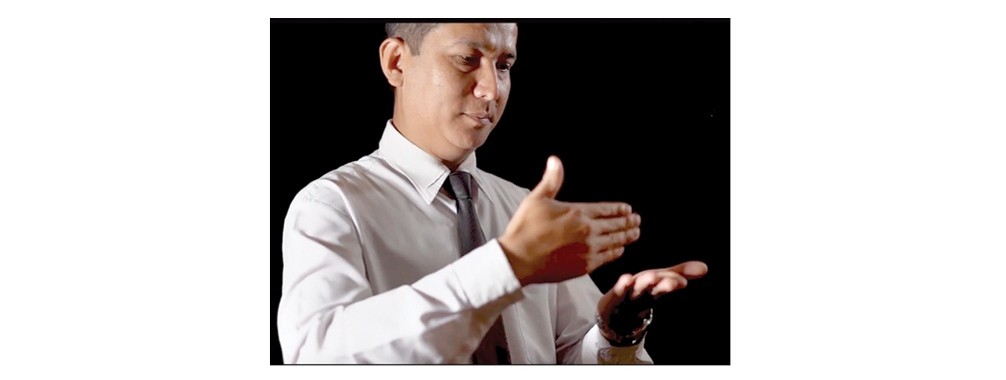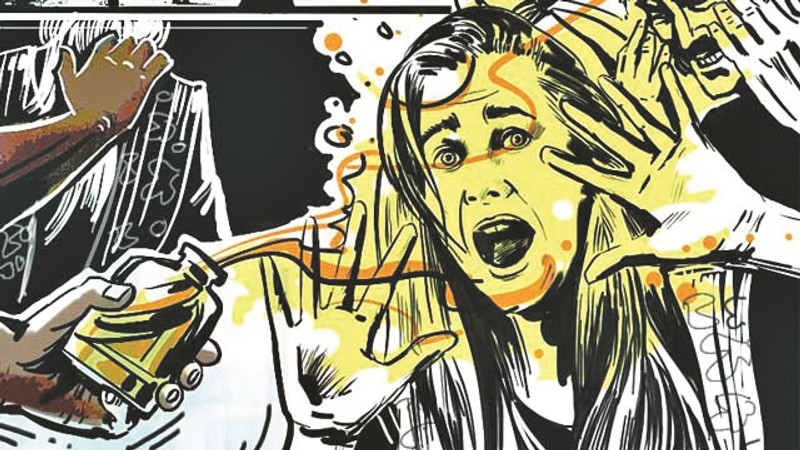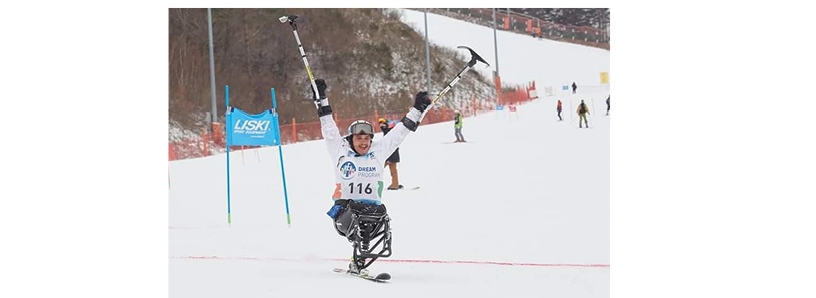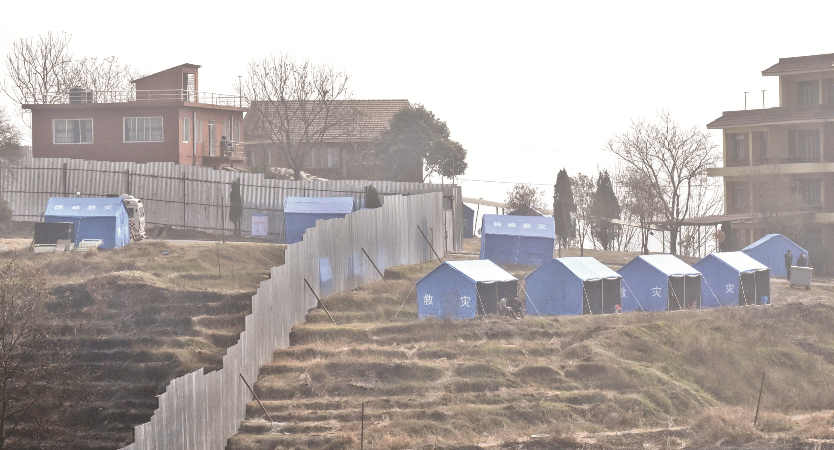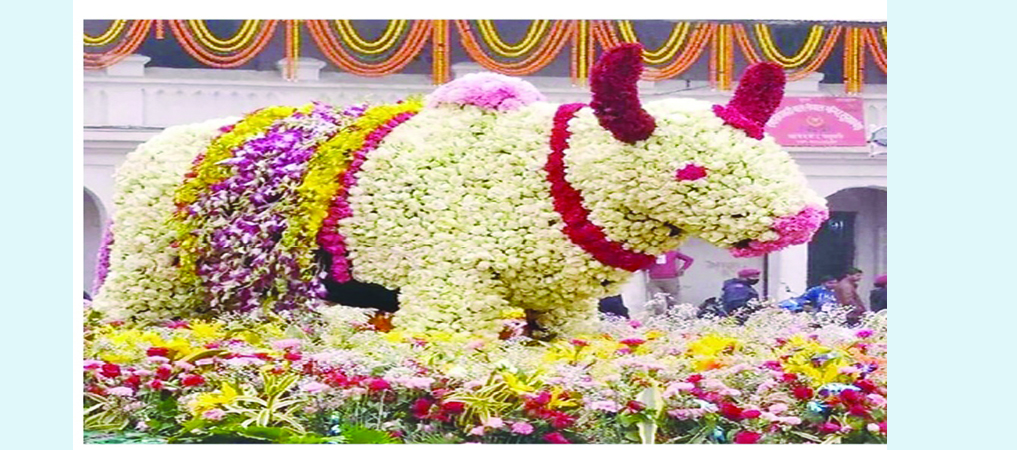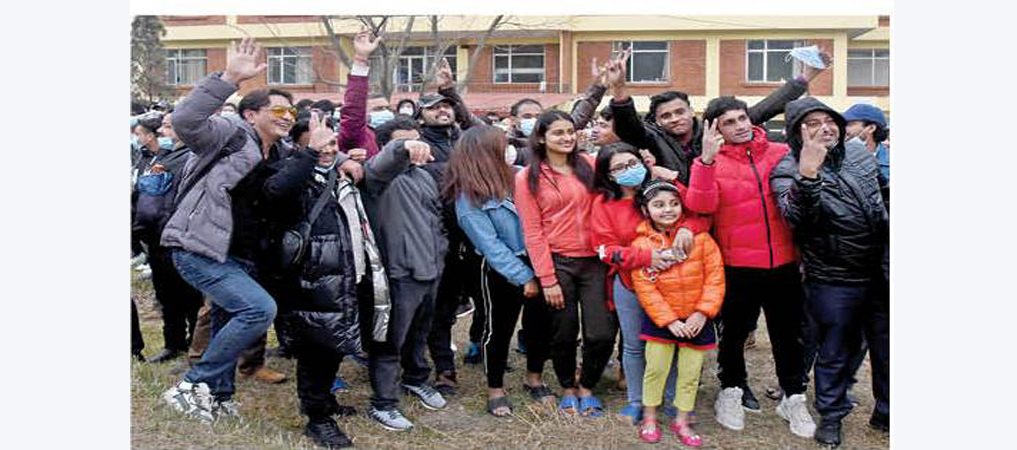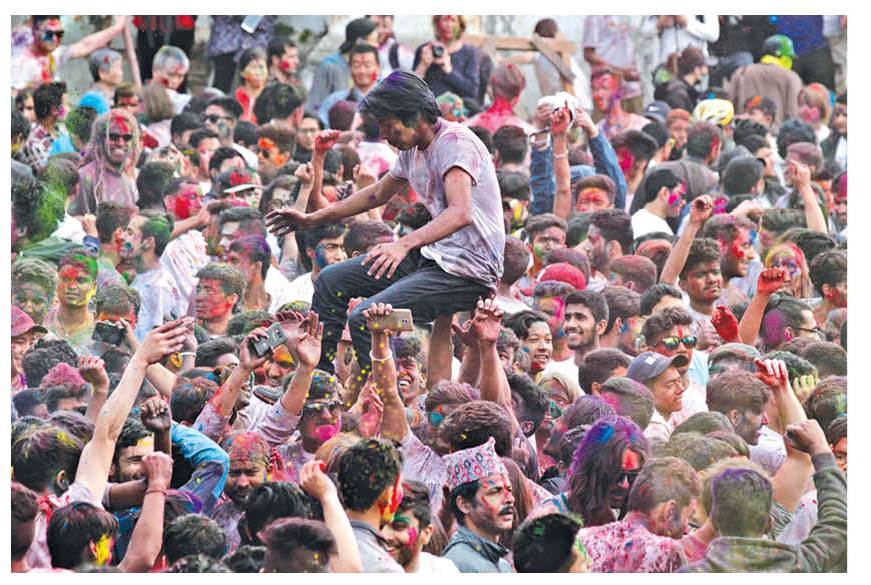Has COVID-19 threat decreased with increased recovery rate?

By Sampada A. Khatiwada
Kathmandu, Dec. 10: In the last one month, Nepal has observed a significant increase in the recovery rate from the novel coronavirus. The daily update of COVID-19 revealed by the Ministry of Health and Population (MoHP) on Tuesday showed the recovery rate at a whopping 94.1 per cent and the number of active cases has decreased to 12,686.
Due to the decline in daily infections and increasing recoveries, the crowd in public areas, roads, and offices without continuing the practices of physical distancing and other safety measures suggest that the people have started to disregard the threat posed by the virus. However, the public health experts assert that the threat of virus still remains intact and the situation of the pandemic cannot be determined only on the basis of recovery rate or infection rate.
Dr. Sharad Onta, a public health professional, said that although the recovery rate, on average, was good, the data collected and presented by the MoHP did not reveal the tenure in which the patients contracting the virus recovered from it.
Questions concerning the average recovery period, the reason behind the decreasing active cases, and infection rate still remain unanswered by the MoHP.
"With the massive surge in recoveries, the absolute number of active cases has only decreased. But the daily infection rate is still the same, which is over 15 per cent," said Dr. Onta. "According to the World Health Organisation (WHO), if COVID-19 infection rate in a country is over 15 per cent, it implies that the fear of virus is still high."
“Thus, we cannot project the spread or control of the novel coronavirus in the upcoming days just on the basis of the number of recoveries,” said Dr. Onta. "Along with the increased recovery rate, the fear of contracting the virus has decreased in the people. However, we shouldn’t overlook the fact that the daily infection rate is still stable and over 1,000 cases are being reported daily despite minimisation of the range of Polymerase Chain Reaction (PCR) tests," he added. "The government, in order to control the spread, must increase the range of PCR testing and conduct contact tracing. The more tests are conducted, the actual ground-level situation of the pandemic in Nepal will be ascertained."
Moreover, Dr. Rabindra Pandey, a public health specialist, said that various reasons such as slowing down of the PCR tests, loss of peoples' confidence towards isolation centers and quarantines, ignorance of people towards the basic health and safety standards, haphazard use of household or ayurvedic medicines had resulted in the decrease in infection rate.
"As Nepal had recorded a significant increase in cases of COVID-19 during the month of August, September and October, it is normal for the recovery rate to increase," he added.
"However, this doesn’t signify that the threat of COVID-19 is decreasing in Nepal. The fear is still intact, especially in the Kathmandu Valley. However, the government's indifference towards increasing the PCR tests and citizens' ignorance towards adopting health and safety standards demonstrate that Nepal is now safe from COVID-19," added Dr. Pandey.
Both, Dr. Onta and Dr. Pandey said that the threat of COVID-19 spread is hovering over us. "The government's intervention to combat the spread of virus like before, spreading awareness among people to duly abide by all the safety measures that have been prescribed, increasing contact tracing and PCR tests rate and surveillance of those staying in home isolation must be stepped up in order to ascertain the exact scenario of COVID-19 and the preventive steps that are to be taken in the days to come," they said.
Recent News

Do not make expressions casting dout on election: EC
14 Apr, 2022
CM Bhatta says may New Year 2079 BS inspire positive thinking
14 Apr, 2022
Three new cases, 44 recoveries in 24 hours
14 Apr, 2022
689 climbers of 84 teams so far acquire permits for climbing various peaks this spring season
14 Apr, 2022
How the rising cost of living crisis is impacting Nepal
14 Apr, 2022
US military confirms an interstellar meteor collided with Earth
14 Apr, 2022
Valneva Covid vaccine approved for use in UK
14 Apr, 2022
Chair Prachanda highlights need of unity among Maoist, Communist forces
14 Apr, 2022
Ranbir Kapoor and Alia Bhatt: Bollywood toasts star couple on wedding
14 Apr, 2022
President Bhandari confers decorations (Photo Feature)
14 Apr, 2022




